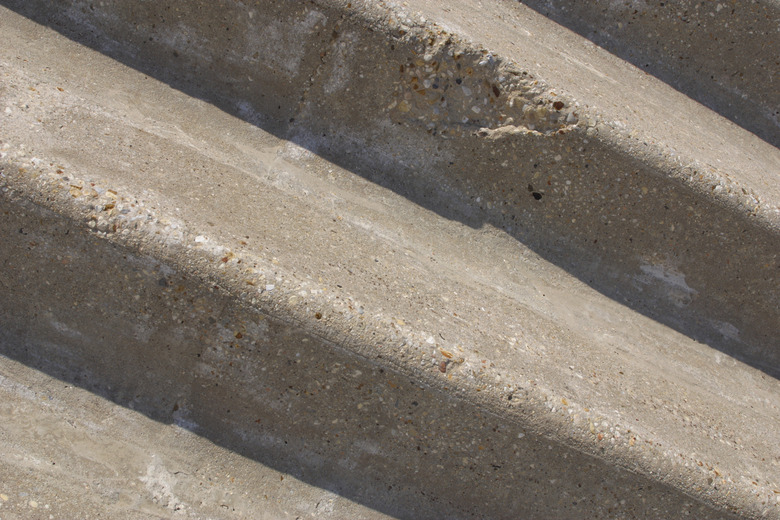How To Build Steps For My Back Door
Step 1
Dig a 6-inch-deep hole in the ground where you are building the staircase. Dig the hole 6 inches wider than the staircase.
Step 2
Dig a footing on each side of the hole that goes beneath the frost line to prevent the steps from shifting during freeze-thaw cycles. Your local zoning board can tell you how deep the frost line is in your area.
Step 3
Drill holes into the side of the foundation with a masonry drill bit where you are installing the steps, if you are connecting them to the house. Position the holes where the top step will be, and keep them evenly spaced. Insert rebar at least 3 inches deep inside the holes. If you're not attaching the steps to the foundation, skip this step.
Step 4
- Dig a 6-inch-deep hole in the ground where you are building the staircase.
Step 5
Construct a form for the steps out of 1/2-inch plywood. When completed, the form will look like a wooden staircase without the treads, which is the part of the staircase that you step on. Follow local building codes regarding the height of the steps. If you are attaching the steps to the house, keep the back of the form open.
Step 6
Place the form into position inside the hole, and drive wooden stakes into the ground every few inches around the outside of the form to help provide additional support when the concrete is poured.
Step 7
Fill the bottom of the form with 4 inches of gravel, then smooth the gravel with a rake and tamp it down.
Step 8
Spread a thin layer of motor oil on the inner surfaces of the form to help prevent concrete from sticking to it.
Step 9
- Construct a form for the steps out of 1/2-inch plywood.
- Place the form into position inside the hole, and drive wooden stakes into the ground every few inches around the outside of the form to help provide additional support when the concrete is poured.
Step 10
Prepare a batch of concrete, following the instructions on the packaging.
Step 11
Fill the form with concrete, beginning at the bottom step and working toward the top step. Remove air pockets from the concrete by working a shovel around inside the concrete as you pour it, and tapping the shovel on the sides of the form.
Step 12
Screed the surface of the concrete by dragging a 2-by-4 board across the top of the form. Allow the concrete to set until it can maintain its shape without the form, following the manufacturer's instructions.
Step 13
Pry the risers off of the form, with the exception of the bottom step. The risers are the front edges of the steps. Slide a finishing trowel over the surface of the concrete, using circular motions. Using the finishing trowel helps draw moisture out of the concrete and smooths the surface.
Step 14
- Prepare a batch of concrete, following the instructions on the packaging.
- Remove air pockets from the concrete by working a shovel around inside the concrete as you pour it, and tapping the shovel on the sides of the form.
Step 15
Smooth the front edges of the steps by running a step trowel over them, then slide a wood float on top of the treads to help provide texture and make them less slippery.
Step 16
Continue to add water to the steps to keep the concrete damp for 5 to 7 days as it cures.
Step 17
Remove the concrete form from around the steps, then fill the gap between the steps and the surrounding ground with dirt.
